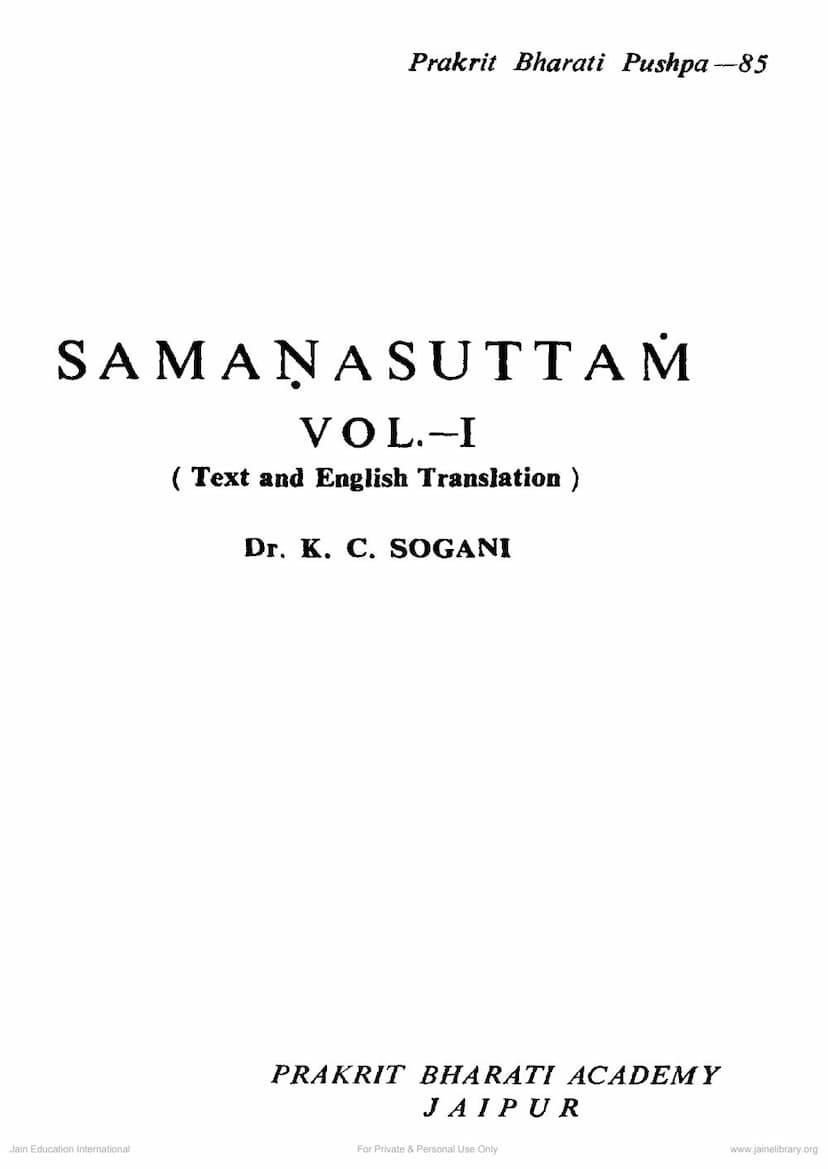Saman Suttam Part 1
Added to library: September 2, 2025

Summary
This document is the first volume of an English translation of the Samanasuttam, a foundational Jain text, translated by Dr. Kamal Chand Sogani and published by Prakrit Bharati Academy, Jaipur.
The Samanasuttam is described as the central book of Jainism, a compendium of Jain teachings that encapsulates the essence of Mahavira's philosophical thought. It is considered as sacred as the Jain Agamas. The text, originally in Prakrit, consists of 756 verses divided into 44 chapters. This first volume translates 335 Prakrit verses.
Key Themes and Contents of Volume 1:
The introduction and table of contents reveal that Volume 1 covers a range of essential Jain concepts:
- Nature of Self: Explores the self from both noumenal (transcendental) and phenomenal (empirical) perspectives, highlighting its inherent perfect qualities and its current mundane state due to karma.
- Goal of Human Pursuance: Identifies the attainment of the Paramatman (Supreme Self) and supreme peace (equanimity) as the ultimate goal, achievable through spiritual awakening (Samyagdarsana), value-knowledge (Samyagjnana), and ethico-spiritual conduct (Samyak-charitra).
- Doctrine of Karma and Transmigration: Details the nature of karma, its eight primary types, and how it binds the soul to the cycle of transmigration. It emphasizes that actions polluted by passions lead to karmic bondage.
- Spiritual Awakening, Value-Knowledge, and Ethico-Spiritual Conduct: Defines spiritual awakening as the foundation of liberation, contrasting it with spiritual perversion. It outlines the characteristics of a spiritually awakened individual and elaborates on the definitions and importance of value-knowledge and ethical conduct.
- Householder's Way of Life: Discusses the two modes of life (saintly and householder) and the specific practices and vows for householders, emphasizing principles like non-violence, non-possession, and self-restraint.
- Concept of Arahanta and Siddha: Explains the supreme objects of devotion in Jainism, their roles as divine beings and spiritual teachers, and the distinction between embodied (Arahanta) and disembodied (Siddha) liberation. It highlights the importance of the Arahanta as a guide.
The translation is presented alongside the Prakrit text, with diacritical marks explained for accurate pronunciation. The publisher's note and introduction provide context on Jainism's ancient origins, its humanistic and spiritual approach, and the significance of the Samanasuttam as a core scripture. The translation aims to make these profound teachings accessible to an English-speaking audience.